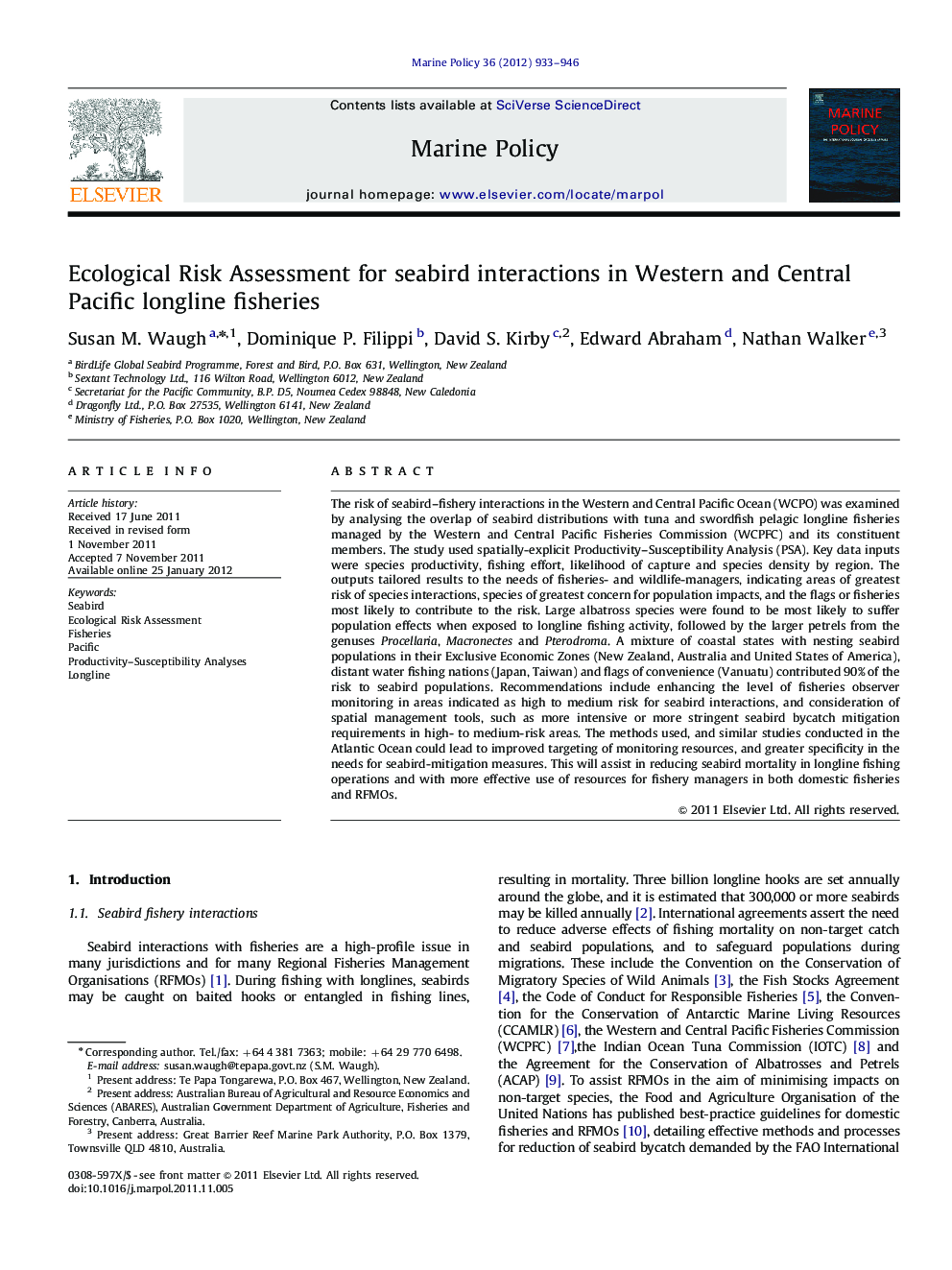| کد مقاله | کد نشریه | سال انتشار | مقاله انگلیسی | نسخه تمام متن |
|---|---|---|---|---|
| 1060840 | 947643 | 2012 | 14 صفحه PDF | دانلود رایگان |

The risk of seabird–fishery interactions in the Western and Central Pacific Ocean (WCPO) was examined by analysing the overlap of seabird distributions with tuna and swordfish pelagic longline fisheries managed by the Western and Central Pacific Fisheries Commission (WCPFC) and its constituent members. The study used spatially-explicit Productivity–Susceptibility Analysis (PSA). Key data inputs were species productivity, fishing effort, likelihood of capture and species density by region. The outputs tailored results to the needs of fisheries- and wildlife-managers, indicating areas of greatest risk of species interactions, species of greatest concern for population impacts, and the flags or fisheries most likely to contribute to the risk. Large albatross species were found to be most likely to suffer population effects when exposed to longline fishing activity, followed by the larger petrels from the genuses Procellaria, Macronectes and Pterodroma. A mixture of coastal states with nesting seabird populations in their Exclusive Economic Zones (New Zealand, Australia and United States of America), distant water fishing nations (Japan, Taiwan) and flags of convenience (Vanuatu) contributed 90% of the risk to seabird populations. Recommendations include enhancing the level of fisheries observer monitoring in areas indicated as high to medium risk for seabird interactions, and consideration of spatial management tools, such as more intensive or more stringent seabird bycatch mitigation requirements in high- to medium-risk areas. The methods used, and similar studies conducted in the Atlantic Ocean could lead to improved targeting of monitoring resources, and greater specificity in the needs for seabird-mitigation measures. This will assist in reducing seabird mortality in longline fishing operations and with more effective use of resources for fishery managers in both domestic fisheries and RFMOs.
► Methods were developed to assess risk of non-target species-fishery interactions.
► Among seabirds studied, albatrosses were most vulnerable to longline fisheries effects.
► Risk was concentrated in temperate areas and varied seasonally by area.
► Six distant water fishing nations and coastal states contributed 90% of the risk.
► Targetting of risk reduction to specific areas and seasons is now possible.
Journal: Marine Policy - Volume 36, Issue 4, July 2012, Pages 933–946